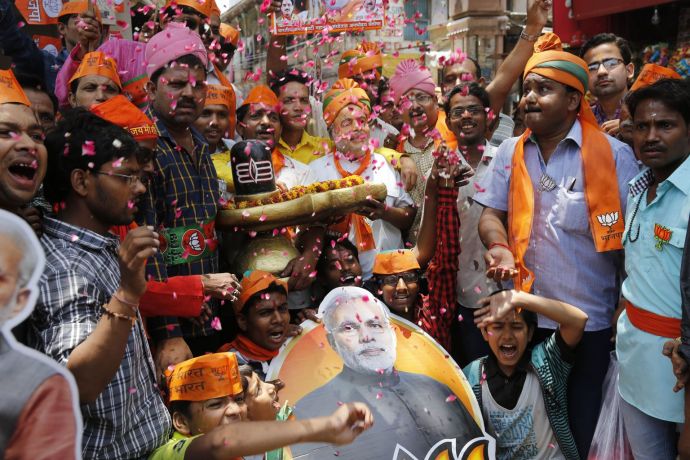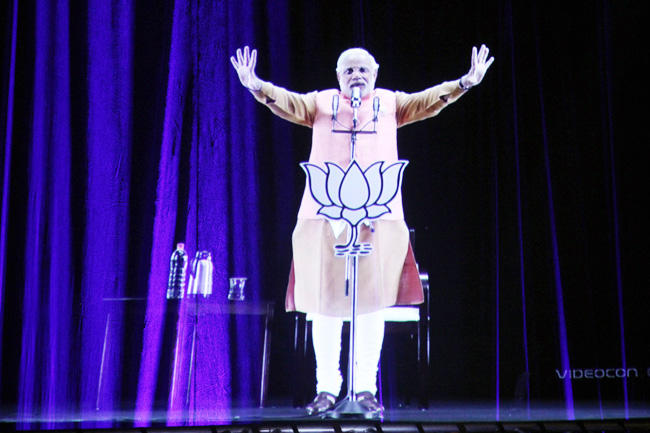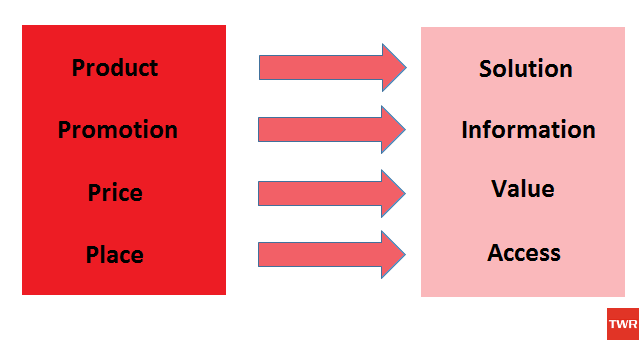Business
Marketing in Politics

Photo by AP
This is not yet another Congress Vs BJP Vs AAP article! However in between, this article uses examples from the winning political party, BJP. BJP is a nationalist, right to centre political party of India, which has made history by becoming the first non-congress party ever to achieve majority in the Indian parliament in 2014. It is also the first time in 30 years when a non-coalition government is formed in the centre, eliminating few prominent political groups from the parliament. This article analyses the surprising performance by the BJP from the marketing perspective.

Image Uploaded by Wiki User: Furfur
The recently concluded democratic elections in India featured some principles of marketing used prior and during the elections by political parties. However, this term was used in a negative sense highlighting corporatizing of democratic institutions and crony capitalism. While crony capitalism is something our democracy should fight, marketing itself is not bad for democracy.
Marketing – in a political perspective – is the process of communicating the value of a product or service (policies, agenda and leader) to customers (entire population, both voters and non-voters), for selling that product or service (getting votes and trust). It is about getting the sense of society’s requirements and coming up with solutions for them. This is something, which all the sincere political parties try to do at the grassroots level.
In the 21st century, corporates have adopted a holistic marketing approach, which says, “Everything matters in marketing”. Such a marketing approach aids converge various segments of society with social responsibility. “Ek Bharat, Shreshtha Bharat” (One India, Great India) – slogan widely used by BJP reflects this approach, discouraging the political marketing activities of “divide and conquer”. Holistic marketing comprises of four components, namely:
- Relationship Marketing: Extending communication with customers (voters) and working on their direct feedback, maintaining long-term relations (retaining voters). With the worst ever performance by the Indian National Congress in these elections, party leadership later accepted that there was a ‘disconnection’ with the people and they failed to recognize the mood of the nation.
- Internal Marketing: Considering employees as internal customers. Motivating party workers, and maintaining healthy two-way communication between upper leadership and lower leadership, party workers and cadres who have first-hand experience and understanding of public mood and problems.
- Integrated Marketing: Keeping every segment in mind and customizing your strategy to target each segment. Whether it is about a problem of a region, rights of minorities, safety for women or jobs for youth, a fair and balanced policy needs to be fabricated in the manifesto addressing everyone’s needs and bringing everything under one umbrella, thus increasing votes. The slogan “Sabka Saath, Sabka Vikaas” (Inclusive Development) widely used by BJP could be considered an example of integrated marketing which clearly had results – BJP winning an overwhelming majority in the parliament.
- Socially Responsible Marketing: For corporates, socially responsible marketing can be just a part of their marketing strategy or Corporate Social Responsibility (CSR). However for political parties, this should be the main component of their strategy with a focus on benefits to the society.

3D projection of Narendra Modi rallying at hundreds of location at the same time. Source: indiatimes.com
In a parliamentary democracy, the demands of people and their needs are the driving force of all policy making and its approval. Such democracy should function for the people and by the elected representatives of the people. Any political party, which is serious about delivering and working for the people, must incorporate the four Ps of marketing. They are Product, Promotion, Price and Placement. When talking about customer focused marketing (public focus), the four Ps can be better presented as SIVA that is Solution, Information, Value and Access.

Customer oriented marketing or, in this case, public focussed politics or “good governance” – a terminology widely used by BJP’s prime ministerial candidate (now Prime Minister of India) is all about putting the citizens first. A political party must understand and recognize the problems in society and come up with a problem-solving product. This product or solution is the mix of leadership, ideology, party policy, action plan, agenda and manifesto.
The next important part of public focussed politics is promoting or informing people about their solution. This includes electronic and print advertisement, public rallies, meeting with people and running social media campaigns, all of which played a huge role in the recently concluded Indian elections.
However, the most important part is if the solution is actually reaching the people. Delivering on election promises can be done only after winning the elections, but it must be already ensured that the solution is applicable to all regions and sections of society. Parties must field a strong candidate in each constituency whom voters can vote for. It must be noted that NDA (BJP+) contested in 542 seats out of total 543, whereas UPA (Congress+) had contested only in 537 seats.
To sell the solution to the people, one needs votes! Every citizen can vote once in five years, thus every vote carries enormous value for him/her as well as for the party. Is your solution worth a voter’s vote? The solution and delivery of promises should be such that a voter feels safe and satisfied voting for that party.
In the latest elections in India, the winning party was accused of using the principles of marketing. Both the major parties, Congress and the BJP had hired PR firms to manage their campaigns. No matter how much funds and efforts you put in marketing, if your product/solution is not convincing to the people, you will not be able to maintain your dominance in the market of democracy for long.
Looking at BJP’s elections strategy, there is not doubt that the party was well aware of marketing fundamentals and made use of it wisely. Nevertheless, delivery of promises and implementation of the solutions is a part of marketing too (selling product/service and value addition). If the party is serious about maintaining its place in the parliament for long time, it should keep in mind all the promises it has to fulfil.
References for further study
- Kotler, Philip & Keller, L. Kevin (2012). Marketing Management 14e. Pearson Education Limited 2012
- Dev, Chekitan S.; Don E. Schultz (January–February 2005). “In the Mix: A Customer-Focused Approach Can Bring the Current Marketing Mix into the 21st Century”. Marketing Management 14 (1).
Business
How To Future-Proof Your Business With The Right Tools

Running a business is a balancing act between managing today’s tasks and planning for tomorrow’s challenges – and getting that balance right is where you’ll find success. Future-proofing your business might sound like something from a sci-fi show or just one of those words that no one really understands or does, but in this case, it’s a real thing, and it’s a really important thing. You’ve got to be proactive, and the tools and systems you choose now can either set you up for long-term success, or leave you in your competitors’ dust, so you’ve got to get it right. With that in mind, keep reading to find out more.
Think Scalability
The tools you’re using right now might seem – and actually be, in fact – perfect for your current needs, but the question isn’t whether they’re working now (you wouldn’t be using them if they weren’t), but instead it’s whether they can grow with you. In other words, you’ve got to choose tools that won’t fall apart as your business grows, meaning you’ve got to start from scratch with new systems – when you’re growing your business, you’ll have enough on your plate without that as well.
For example, small businesses often rely on simple payment methods in the early days, and although they’re definitely convenient, as time goes on you’ll probably have to rethink things, especially if you’re growing. If you’re still relying on quick fixes, it’s probably time to stop using Zelle for payments because when it comes to business transactions, it doesn’t have the features and security of something more professional.
Automate Where You Can
What’s one of the most precious resources any business owner can have? The answer is time. So if time is so precious, why are you wasting it on repetitive tasks when you could be doing other things if you put some automation in place? Just think of all the time you’d free up if you automated your invoicing, social media posts, email campaigns, and so on – what could you do to make your business better with the time you save?
Not only does automation save time, but it also means there’s a lot less chance for human error to creep in, and that’s got to give any business owner lots of peace of mind and reduce their stress levels – and doing that is always a positive.
Stay Ahead On Cybersecurity
You might have noticed a few (and possibly the numbers are growing) headlines recently about big data breaches – it basically means that customers’ sensitive data has been accessed by hackers, and when that happens, those customers can have issues with identity theft, lost money, compromised passwords, and more.
That’s why it’s so important to invest in good cybersecurity if you want to future-proof your business and make it strong and trustworthy today. Strong firewalls, secure payment systems, data encryption, cloud storage, and good cybersecurity training for your team can go a long way to protecting your business and your customers, meaning it’s going to last a lot longer and get a good reputation too.
Business
What are EDC products, and why should you always have them?

EDC gear includes products that have become indispensable for improving one’s quality of life. These are the tools and implements that can solve everything from simple daily tasks to being vital objects capable of saving lives.
Regardless of the lifestyle you lead, there are countless situations in daily life where you need a tool or item that helps resolve inconveniences or facilitates completing tasks. This is where the category of products known as EDC (Every Day Carry) comes into play. EDC includes a variety of items that are necessary in unexpected moments.
For these tools to truly be useful in daily life, they must be durable and of high quality. For this reason, it is highly recommended to choose selected EDC gear by Onibai.com, an Italian brand with extensive experience in selling this kind of exclusive everyday carry equipment. The brand offers a wide selection of well-crafted, durable products that meet the demands of everyday carry needs.
Knives: essential for multiple situations
Knives, or EDC blades, are among the most essential tools in any EDC kit. In fact, they are often seen as a symbol of someone who is prepared, practical, and functional. Whether it’s opening packages or envelopes, cutting cords or ropes, or other simple daily tasks, a suitable knife can make these activities much easier. Additionally, a good knife can serve as a means of self-defence in case of sudden attacks.
Over time, the design of knives has evolved and diversified. Daily-use knives are now specifically designed for lighter cutting tasks, such as those mentioned earlier. Tactical knives, on the other hand, are made for more intense scenarios. They are stronger and reinforced, often designed for high resistance or self-defence situations.
Urban knives, tailored for city dwellers, are built to meet the needs of individuals in modern environments, so they often feature sleek finishes that complement contemporary lifestyles. Another popular category is multi-tool knives, which are designed to handle a variety of tasks. These knives have the resilience and sturdiness of a 3-inch blade while also fulfilling the precision requirements needed for various EDC tasks.
Other essential EDC products
In addition to knives, there is a wide range of other EDC products that are indispensable in daily life. One of these is, undoubtedly, a reliable wallet. A well-designed wallet needs to be robust enough to withstand daily use while keeping essential items like bank cards, identification documents, and more, safe and in good condition.
Flashlights are also vital components of any EDC kit. These tools are incredibly useful in many situations, particularly in dark environments or emergencies where additional lighting is critical. When selecting a torch, factors such as battery life, size, portability, and brightness should all be taken into account.
Purses, fanny packs, or backpacks also play an essential role in everyday carry. These items are where people store the various EDC products described above. They usually come with several compartments and are available in different sizes and materials, depending on the person’s style and daily activities.
Other items that are part of an EDC kit include beads and cords, Velcro patches, bottle openers, multi-functional key organisers, as well as durable, long-lasting, and stylish pens that adapt to any situation and lifestyle.
An interesting category of EDC products includes stress-relief toys for adults, which provide a means of alleviating daily stress. Popular options in this category include fidget spinners, fidget sticks, stress-relief sliders, poker chips with buttons, and mechanical coins. These items not only serve as a source of relaxation but can also be a fun and effective way to manage anxiety and tension during the course of a busy day.
In conclusion, EDC gear is not just a set of tools but a lifestyle that reflects preparedness, practicality, and a proactive approach to the uncertainties of everyday life. The more equipped you are, the more empowered you will feel in facing the challenges that arise.
Business
The importance of telescopic handlers: innovation and efficiency in load handling
In the field of logistics, efficiency and safety are key aspects for the success of any project. Machines and tools must handle heavy loads and perform complex tasks with precision. In this sense, Magni TH telescopic handlers are the perfect option.

Telescopic handlers are lifting equipment that combine the capabilities of a crane and a forklift, featuring a telescopic arm that can extend and retract to reach considerable heights and access areas that may be difficult to reach manually. Thanks to this versatility, they become essential tools for a wide range of applications, indispensable in multiple sectors.
Today, the telescopic handler industry is constantly evolving, with technological innovations that enhance their functionality. One of the leading companies in this field is Magni TH, renowned for offering high-quality, efficient machinery with a focus on innovation and sustainability. This ensures that their telescopic handlers not only meet current demands but are also prepared for future challenges.
What does Magni TH offer?
Magni TH stands out in the market by offering a wide range of telescopic handlers that adapt to a long list of specific needs. Among their most notable models are fixed telescopic handlers (TH), rotating telescopic handlers (RTH), and heavy-duty telescopic handlers (HTH). They also offer aerial platforms, ranging from fixed models to articulated and rotating versions.
Furthermore, Magni TH machinery is widely recognised for its high-quality standards, due in large part to the selection of top-class raw materials. This attention to detail not only ensures compliance with market safety standards but exceeds them, guaranteeing that every machine is 100% reliable and durable.
Magni TH’s manufacturing process is another aspect that sets them apart. The company combines advanced industrial techniques with a craftsmanship approach, allowing for continuous innovation and enabling them to remain at the forefront of the market. This combined approach not only improves production efficiency but also allows for greater customisation.
In addition to their impressive product line, Magni TH is committed to providing proper advice and training to its customers. The company offers detailed descriptions of its products and services, ensuring that customers fully understand the capabilities and strengths of each machine model.
Magni TH also stands out for its focus on sustainability, reflected in the energy efficiency of each of their machines. This not only maximises user productivity but also ensures environmental responsibility at all times.
Innovation and safety
The use of innovative, high-quality telescopic handlers, like those manufactured by Magni TH, is essential for significantly improving operational efficiency across various sectors. These machines, thanks to their precision and speed in executing complex tasks, help reduce the time needed to complete projects, thereby increasing the overall productivity of companies.
On the other hand, safety is another key aspect when using high-quality telescopic handlers. These machines are equipped with advanced safety systems, such as stabilisers, enclosed cabins to protect operators, and load control systems, ensuring operations are carried out efficiently and reliably. Moreover, their ability to handle loads with precision and care is crucial for ensuring the integrity of products, significantly reducing the risk of damage during transport and handling. This is particularly important in sectors where product integrity is critical to maintaining high-quality standards.
At the same time, the use of innovative telescopic handlers can also enhance a company’s competitiveness. Investing in high-quality equipment allows them to provide services with greater efficiency and safety, helping them stand out in the market. Ultimately, investing in this type of telescopic handler can be considered a strategic decision that can have positive long-term impacts on the sustainability and growth of a company, as adopting advanced technologies demonstrates a commitment to excellence and proactivity, keeping companies at the forefront and allowing them to adapt easily to the many changes in the market.
Versatile Applications of Magni TH
Magni TH telescopic handlers are known for their versatility and ability to adapt to a wide range of applications. Unlike other companies that focus on specific sectors, Magni TH offers its products to any industry that requires load handling solutions. For example, in the agricultural sector, Magni TH telescopic handlers are key tools for tasks such as handling hay bales, transporting fertilisers, and loading livestock. Additionally, their ability to navigate uneven terrain and lift large volumes of material are essential advantages on farms and agricultural operations.
Likewise, the maritime sector benefits greatly from the versatility of Magni TH telescopic handlers. These machines are ideal for storage and cargo handling on vessels and ports, as well as for small routine maintenance operations.
In construction, Magni TH telescopic handlers are one of the most widely used tools, enabling the lifting and positioning of heavy materials such as bricks, cement, and beams. Regardless of the size of the construction project, their ability to operate on difficult terrain and reach high altitudes makes them ideal for any occasion, improving productivity and minimising the risk of accidents.
Finally, telescopic handlers are also widely useful in the industrial and mining sectors. In industry, these machines are employed for material handling in factories and warehouses, while in mining, their robustness, and load capacity make them a perfect option for working in extreme conditions.
-

 Business10 months ago
Business10 months agoHow To Future-Proof Your Business With The Right Tools
-

 Travel8 months ago
Travel8 months agoTravelling from San Antonio to Guadalajara
-

 Business11 months ago
Business11 months agoWhat are EDC products, and why should you always have them?
-

 Travel5 months ago
Travel5 months agoTravel wellness tips for a healthier and more enjoyable journey
-

 Europe3 months ago
Europe3 months agoRecent Books by Boaventura de Sousa Santos: Law, Colonialism, and the Future of Europe













